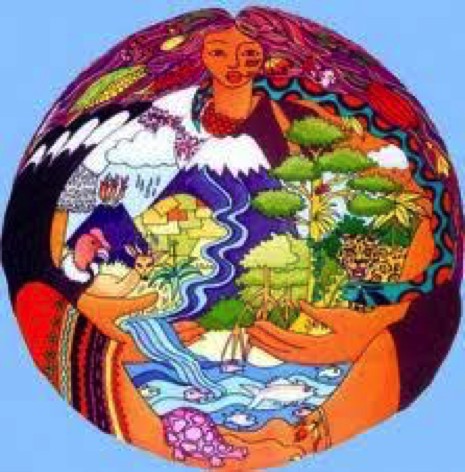
Buen Vivir / Sumak Kawsay
#MoveTheDate Solutions

Personal / Community: Community project
Population sub-categories: Legislation, regulation, mandate
Description: Buen vivir is an inherently pluralistic concept. While its roots emanate from Andean cosmovision, it has evolved beyond native cosmology by incorporating alternative ideologies from the western world (Hidalgo‐Capitán & Cubillo‐Guevara, 2014). Mixing with ecological, poststructuralist, socialist and radical democratic voices, buen vivir is built on a rich diversity of ontologies and teleologies united in the creation of an alternative to hegemonic visions of development (Escobar, 2011). The concept is thus in continuous debate and reinvention, while placing no culture or ideology above any other. This is what Esteva calls ‘radical pluralism’ leading to ‘a world in which many worlds can be hospitably embraced’ (2010, p. 67). Although there is no definitive conception of buen vivir, it has core elements that can be found in all its definitions. First, buen vivir does not create a conceptual divide between nature and society. This is why Gudynas calls it a biocentric rather than anthropocentric ideology (2011). Instead, nature is conceptualized as pachamama, (mother earth), the source of all life, of which humans are an intrinsic part (Houtart, 2011). Buen vivir thus places people as equal inhabitants of the earth, sharing the same limited yet plentiful environment. This symbiotic relationship with pachamama, leads towards the creation of a mode of life in harmony with the natural cycles of life and death. The ideal envisioned by buen vivir is thus in direct opposition to the extractivist consumerism of industrial capitalism (Acosta, 2010). In contrast, buen vivir promotes organic agriculture, renewable energy, ecotourism and recycling as the basis for an economy in which people and nature can flourish from each other's cycles (SENPLADES, 2009). Buen vivir is also founded on strong communitarian aspects, proposing a progressive vision of social and environmental justice. Promoting both distributional and procedural justice, buen vivir fosters a greater social control over the government and the means of production (Acosta & Gudynas, 2011). Buen vivir hence aspires for a radically democratic society where people have a meaningful power over political and economic forces. Cooperative economic structures and active citizen participation in political decision making are thus promoted as ways to reorganize society ‘from the bottom up’ (Esteva, 2010). Finally, buen vivir is conceptualized under a vision of happiness that reaches beyond the material accumulation and individualism typically endorsed by capitalism (Hidalgo‐Capitán & Cubillo‐Guevara, 2014). Less emphasis is placed on hierarchy and competition: while more is placed on solidarity, reciprocity and citizenship as a whole. Buen vivir is thus closely related to concepts of degrowth and slow economy, aiming to create a future that seeks human emancipation in a holistic and sustainable manner (Acosta, 2010).
Website about this solution: https://onlinelibrary.wiley.com/doi/full/10.1111/1758-5899.12187
Why I love this solution: Buen vivir's collective philosophy of progress and the harmony envisioned between and within humankind and nature pose the foundations for a truly global consciousness. If humanity has a chance of succeeding against the challenges brought by the anthropocene, it must step beyond the anthropocentric and ethnocentric constructs, which have dominated global policy making. Moreover, the ‘radical pluralism’ envisioned by buen vivir poses the foundation for a form of global partnership that seeks to operate beyond entrenched ideological and narrow national interests and towards collective ‘humane’ aspirations.